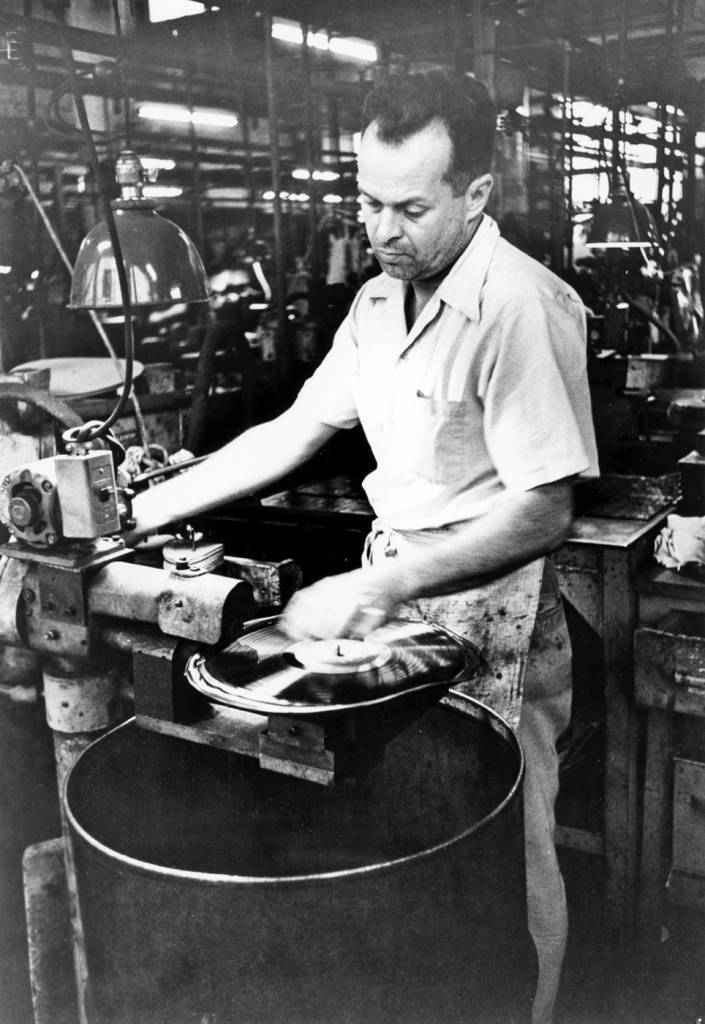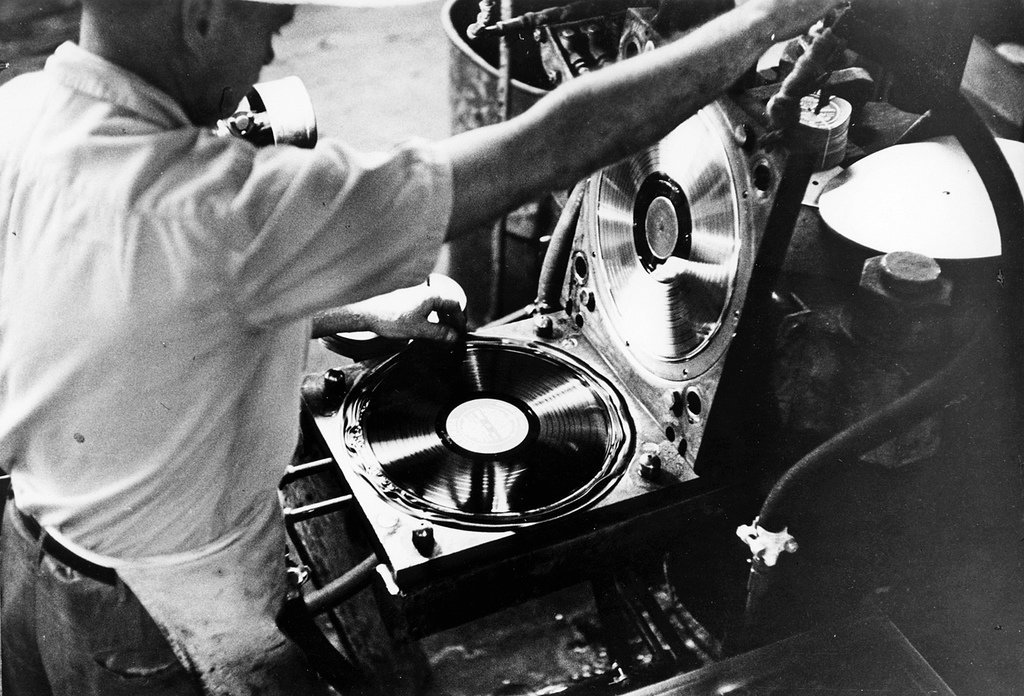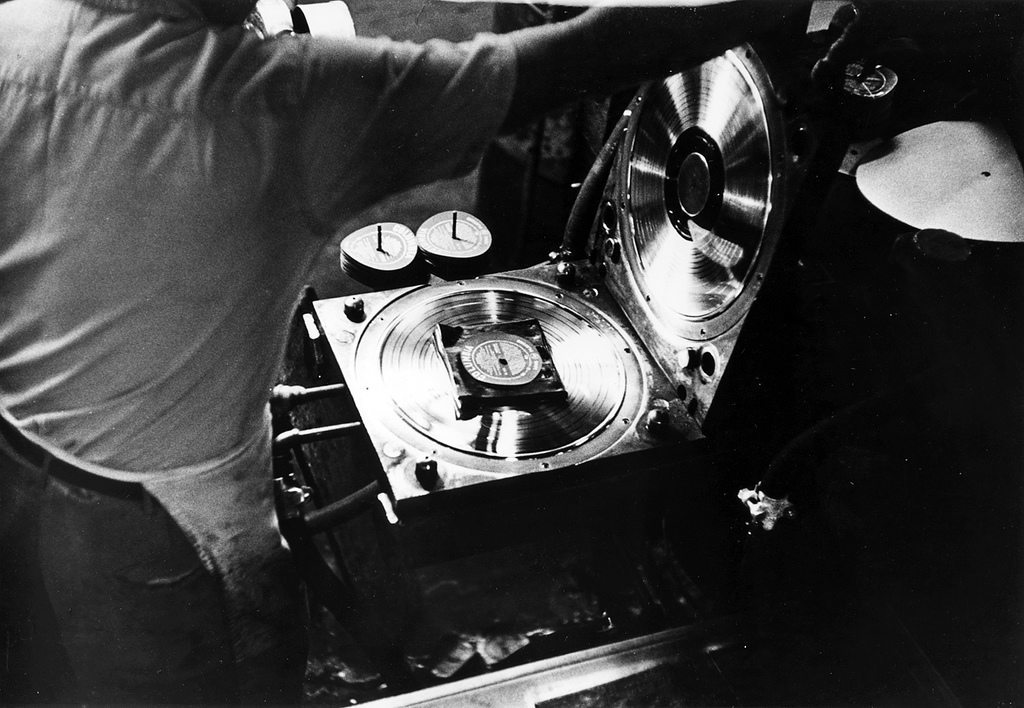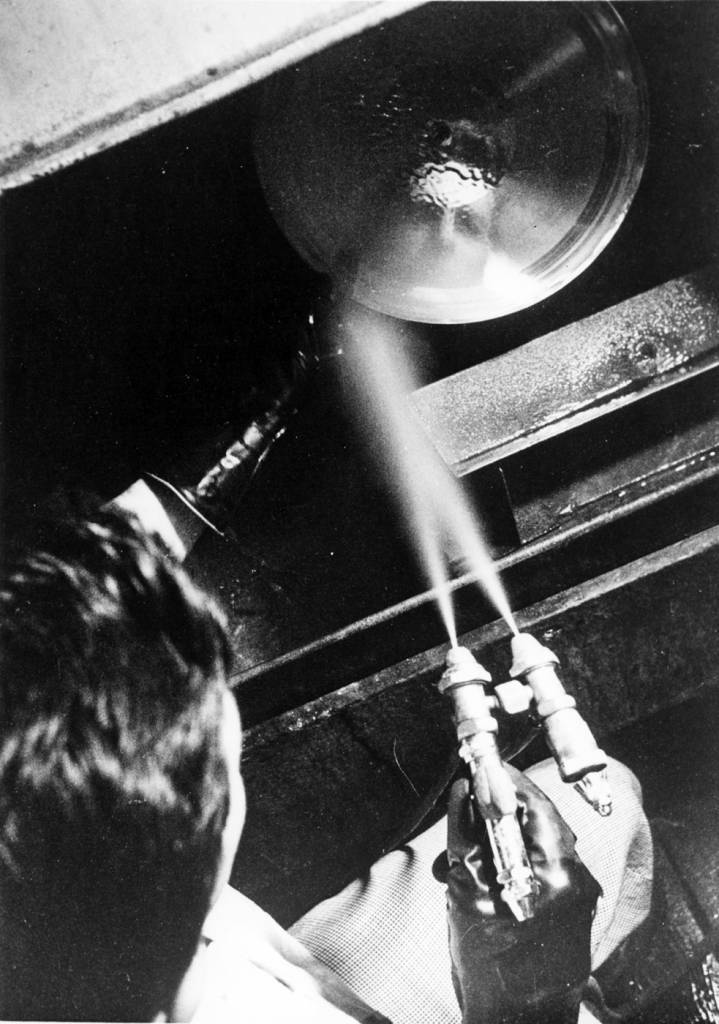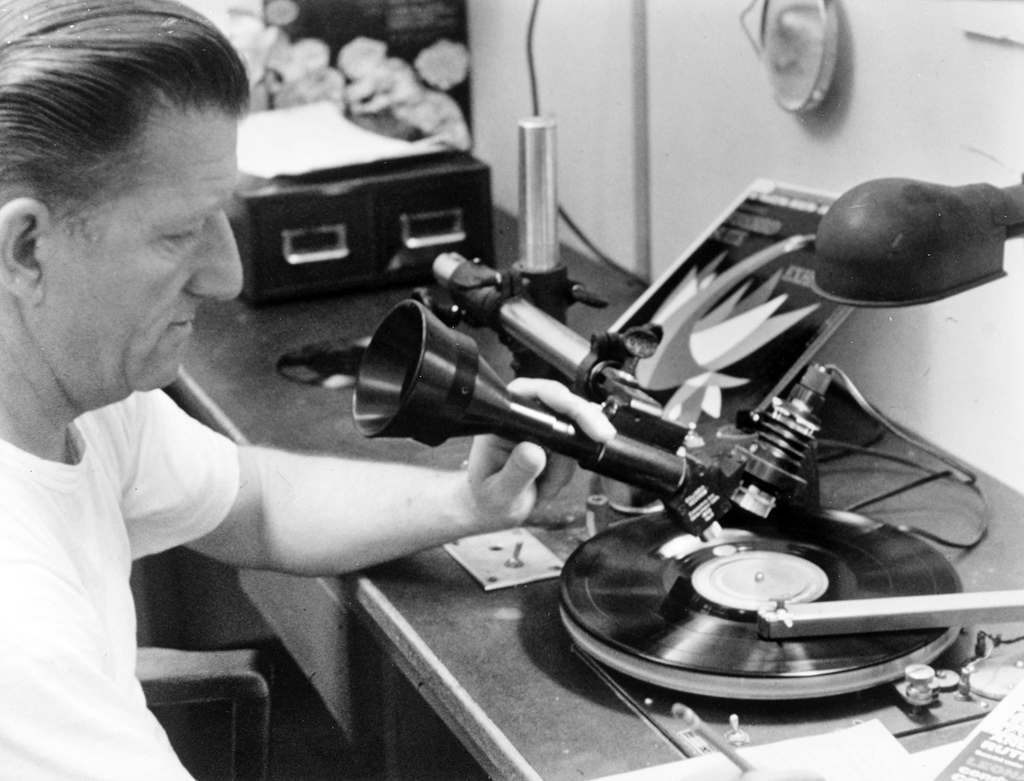I’m gonna write a little letter
Gonna mail it to my local DJ
It’s a rockin’ rhythm record
I want my jockey to play
Roll over Beethoven, I gotta hear it again today
– Roll over Beethoven, Chuck Berry
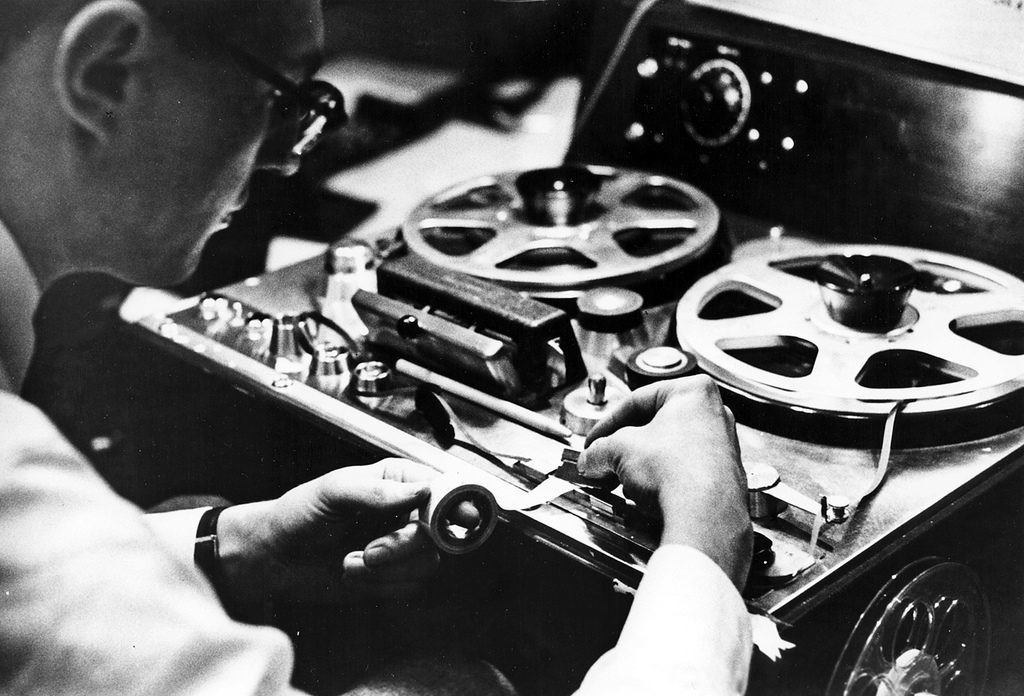
“An engineer splices a tape during the selection and compilation of tapes for the finished product.”
The engineer above is using an AMPEX 300. AMPEX stood for Alexander M. Poniatoff Excellence, in honor of the company’s founder and his aims.
AMPEX was a huge name in recording equipment. Mr Poniatoff’s AMPEX Quadruplex VR-1000 was the first commercially produced video tape recorder. When German Nazi war criminal Adolf Eichmann was tried in Jerusalem, Israel, in 1961, the courtroom exchanges were recorded on an AMPEX Quadruplex VR-1000, with videotape flown to the US for broadcast each day.
And then there were the records.
There is something wonderful about watching recorded music being turned into objects of desire, to own, cherish, lend and share. Will we one day dust off our ‘cloud’ software and play the tunes stored virtually in beeps and burps? Will copyright lawyers let us? Perhaps. But it seems unlikely. You can stumble on an old record, touch it, feel the contours, enjoy the art and the intrisic label, and slide it from the protective sleeve. Its look and form appeals to our curiosity. It’s delicate and cool in your hands. That others have touched it in the making and moving from factory to record store and home adds to a record’s quality. These records are human-sized slices of culture.
And this is how vinyl records was made in 1954 at the AMPEX factory in San Carlos, California.
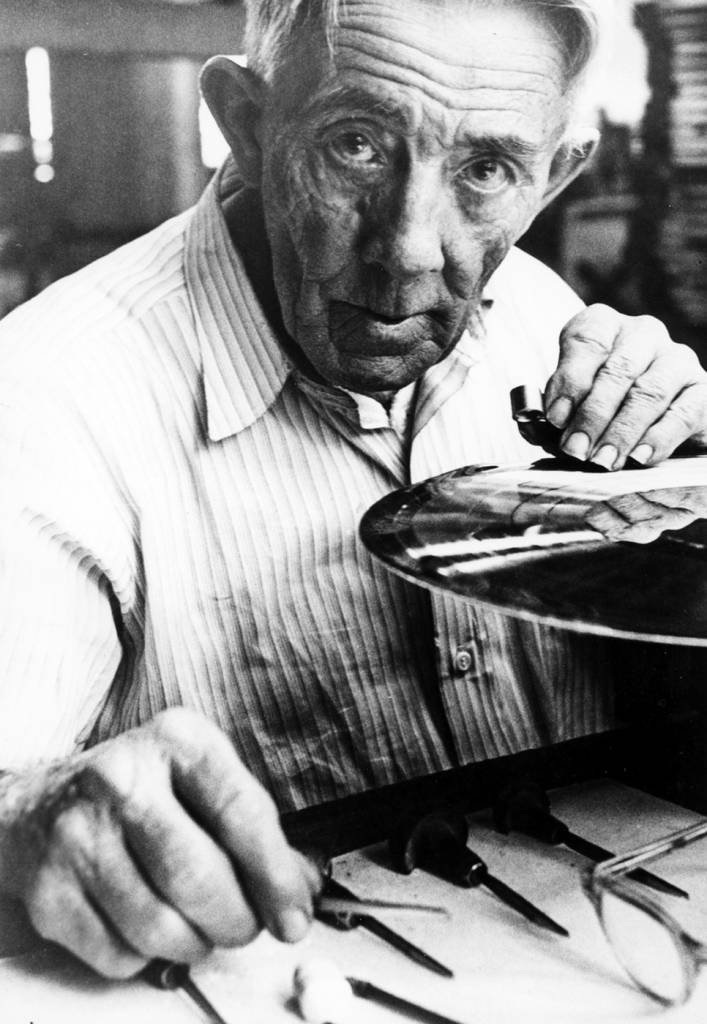
“An engraver receives the inspected copper mother and removes any mechanical blemishes. From this ‘mother’ disc are made the stampers that are used to produce the finished records.”
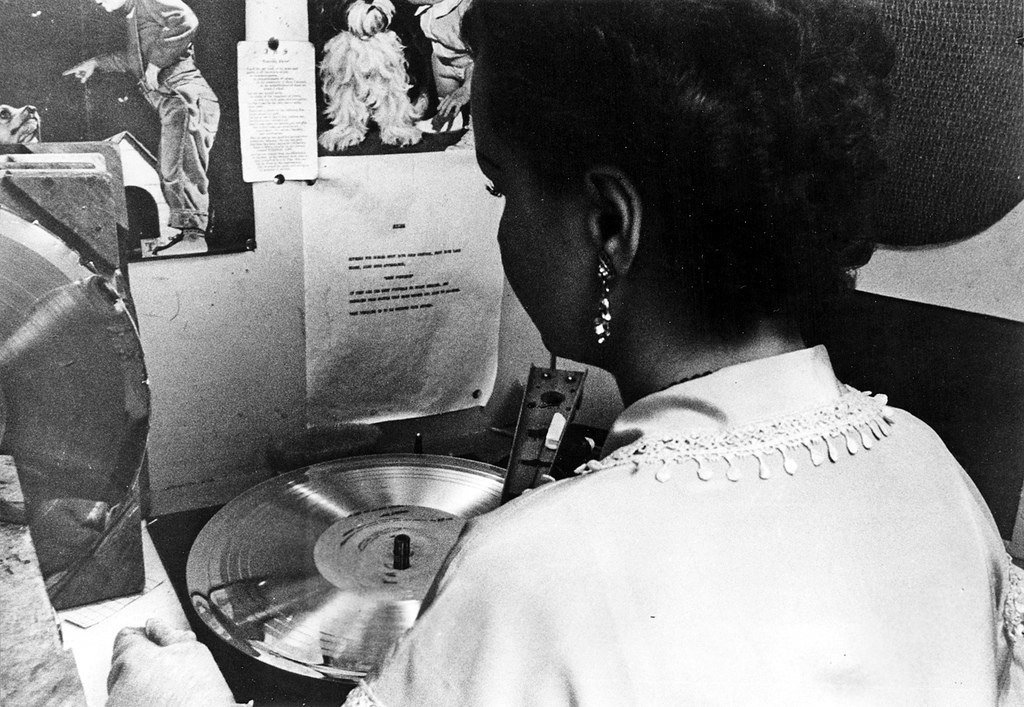
“From the copper master, a ‘mother’ or sopper positive is produced using similar plating processes; they are again stripped from each other, and then ‘mother’ (a positive) is played and checked for defects.”
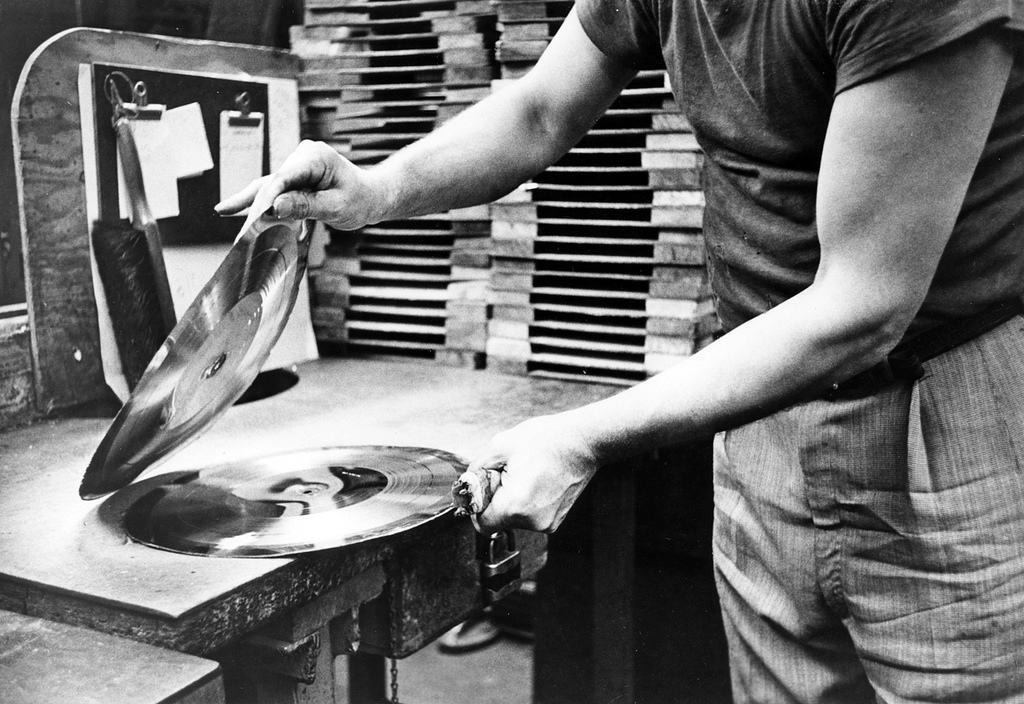
“The positive master goes through several processes in plating and then a negative copper master is stripped from the original lacquer disc.”
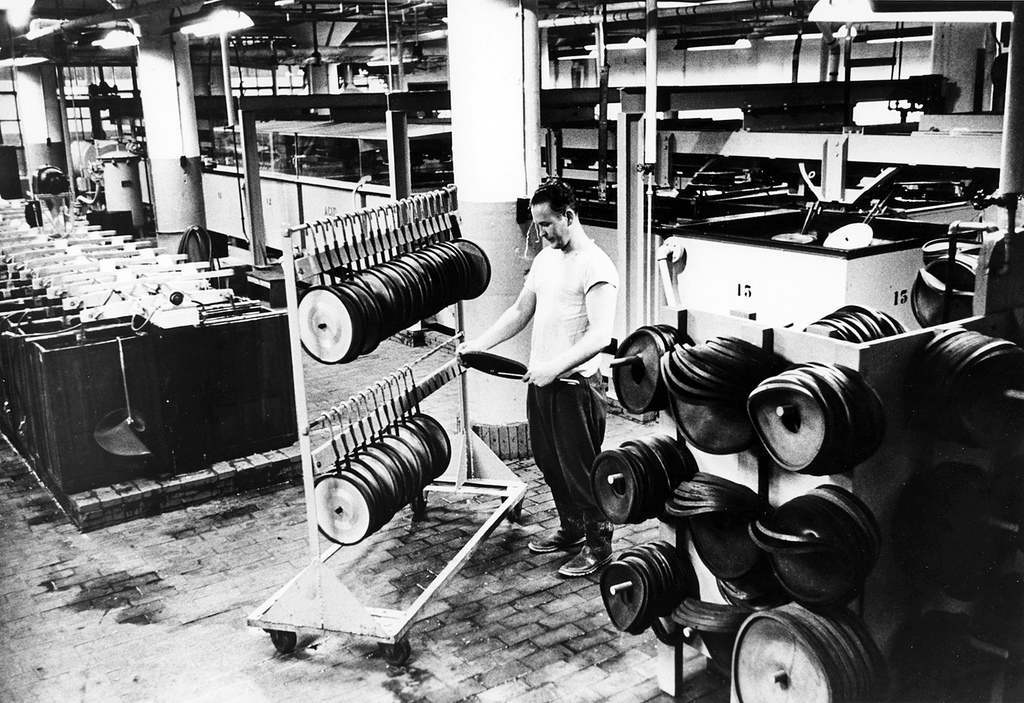
“The silvered master (a positive) is mounted in rubber rings as a preliminary to placement in electroplating tanks.”
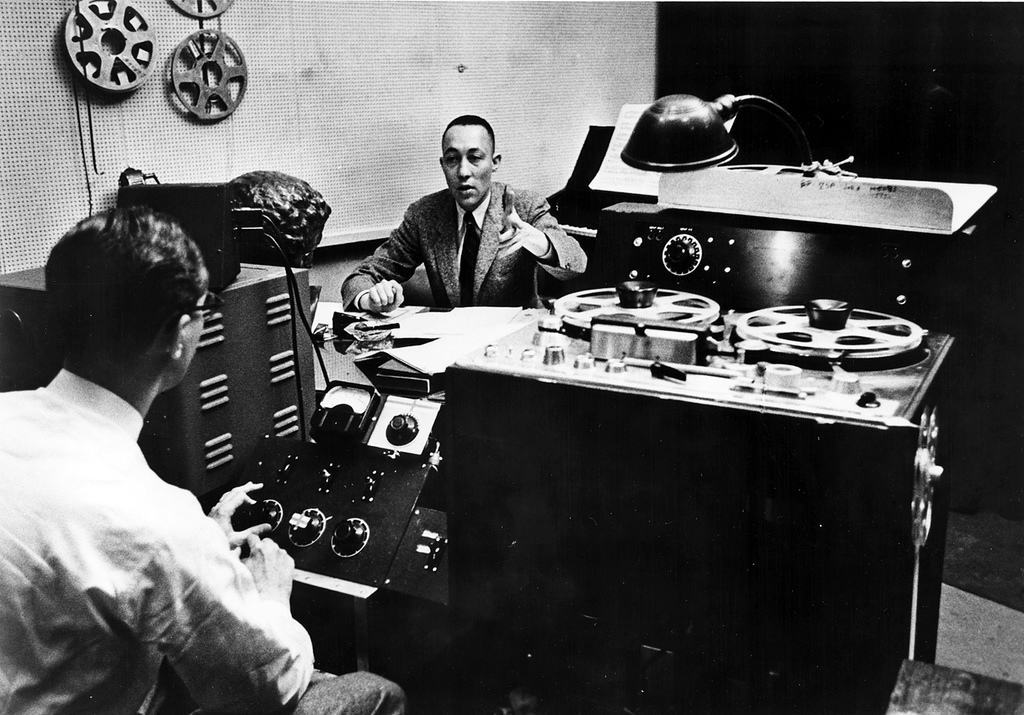
“A member of the artists and repertoire department works with an engineer at the final editing for sound quality and album sequence.”
Via: Al Q
Would you like to support Flashbak?
Please consider making a donation to our site. We don't want to rely on ads to bring you the best of visual culture. You can also support us by signing up to our Mailing List. And you can also follow us on Facebook, Instagram and Twitter. For great art and culture delivered to your door, visit our shop.

